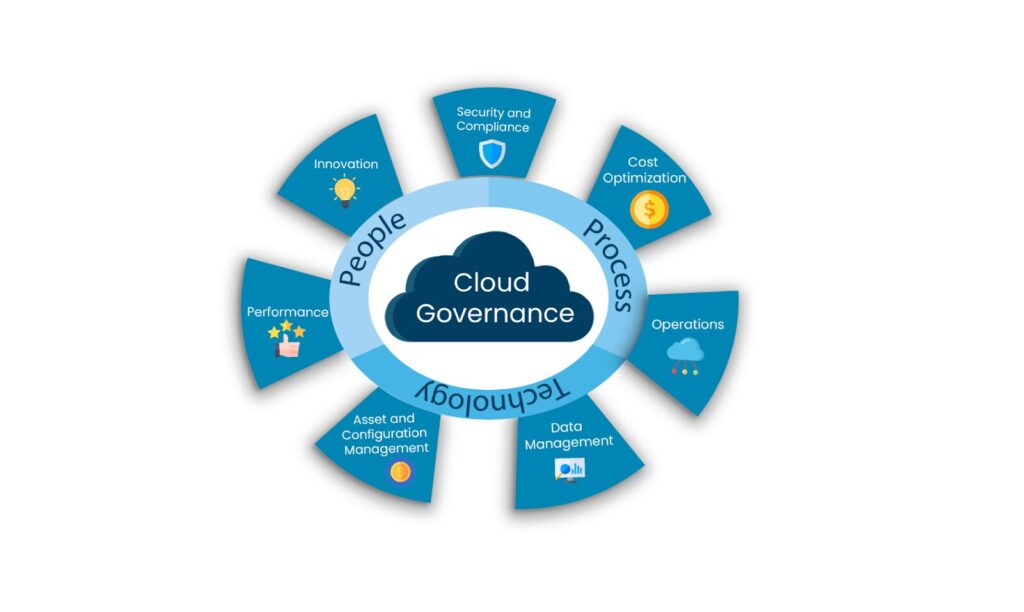Cloud computing is the foundation of modern infrastructure and technology. With the growing shift toward the cloud, the challenges of managing security, compliance, costs, and operational efficiency are also increasing. Cloud Governance provides the framework for effective, secure, and compliant cloud environments while maximizing the benefits of cloud computing.
This blog gives you a brief overview of cloud governance, key frameworks and the best practices. Let’s learn about cloud governance with WeCloudData – A data academy whose focus is on educating learners about data and cloud.
What Is Cloud Governance?
Cloud governance is the structured set of rules, policies, and processes to manage resource usage, security, and compliance across cloud environments. Cloud Governance serves as the foundation for operational continuity and scalability, regardless of whether you’re managing multi-cloud deployments across platforms like Microsoft Azure, AWS, and Salesforce or working in a single-cloud environment.
According to Microsoft’s Cloud Adoption Framework, cloud governance is critical to balancing agility with control, especially as cloud use scales across business units. Poorly governed data in cloud environments creates multiple entry points for cyber threats. Cloud governance involves:
- Controlling possible threats to cloud security
- Aligning business goals with cloud resource allocation
- Improving cost-effectiveness and security
- Cloud monitoring and threat prevention
- Optimizing cloud usage

Why Cloud Governance Is Non-Negotiable in 2025
Poor cloud governance can cost millions in lost revenue, customer trust, and legal penalties due to high-profile data breaches and shadow IT threats. Data governance is non-negotiable in today’s cloud-centric world, especially in sensitive industries like finance, healthcare, and government, where regulatory compliance is important.
Key Drivers for Cloud Governance Today
Regulatory Compliance (HIPAA, GDPR, FedRAMP)
Sensitive data is gathered, stored, processed, and shared responsibility across all platforms and geographical locations when there is strong cloud data governance in place. This is accomplished by adhering to certain regulatory compliance, such as FedRAMP (which oversees cloud service security for the United States), GDPR (which limits the use of personal data in the EU), and HIPAA (which regulates healthcare data in the U.S.).
Security and Identity Management
Modern cyber threats evolve more quickly than traditional ones. A strong cloud governance framework enforces security standards while enabling identity and access management (IAM) at scale. It ensures that only the right people and processes can access the right resources, at the right time, under the right conditions.
Operational Control and Cost Optimization
Although cloud offers scalability, it also brings the risk of huge costs and shadow IT if not properly governed.
Visibility Across Multi-cloud Environments
Today, the majority of businesses combine AWS, Azure, Google Cloud Platform (GCP), and government community clouds in a multi-cloud approach. Cloud data governance provides a consistent “single source of truth” across multi-cloud environments essential for resource management, security, and auditing.

Cloud Governance Frameworks
The cloud governance frameworks are briefly explained below.
Microsoft Azure Cloud Adoption Framework (CAF)
Microsoft Azure’s Cloud Adoption Framework (CAF) provides a methodical governance architecture that guarantees cloud environments are safe, economical, and in line with corporate objectives. CAF governance is helpful for public sector organizations and regulated industries like financial, healthcare, and defense that use government cloud platforms like Azure Government Cloud or government community cloud infrastructure.
Five key steps for CAF include;
- Build a governance team (cross-functional experts).
- Evaluate cloud risks (security, compliance, cost).
- Document policies (define acceptable cloud use).
- Enforce policies (using automated tools like Azure Policy).
- Monitor governance (continuous compliance checks)
COBIT
The COBIT governance standard was created by the Information Systems Audit and Control Association to help businesses and other organizations manage their IT operations. The model includes a framework of processes and practices, process descriptions, control objectives, management guidelines, and maturity models.
ISO/IEC 38500
ISO/IEC 38500 is a global standard for corporate IT governance that covers decision-making, communications, and processes. The framework covers establishing roles, supporting IT operations, utilizing technology, keeping track of performance, and adhering to policies.
AWS Well-Architected Framework
The AWS Well-Architected Framework is a popular governance model in cloud computing ideal for both public and private sector enterprises, including those using Salesforce Government Cloud and Azure Government Cloud. This framework promotes governance in cloud computing by integrating best practices into every phase of the cloud lifecycle.
The five pillars of AWS Well-Architected Framework are;
- Security (Data Protection, Compliance, Security Monitoring)
- Cost Optimization (Auto Scaling, Right-Sizing, Billing Transparency)
- Operational Excellence (Automation, Monitoring, Infrastructure as Code)
- Performance Efficiency (Elasticity, Load Testing)
- Reliability (Backups, Disaster Recovery, Resilience)

Cloud Governance is the Backbone of Cloud Success
Governance in cloud computing is crucial for any organization that uses the cloud in today’s digital world. Businesses and governments must adhere to strict rules, maintain security, and keep expenses under control whether using Salesforce Government Cloud or Azure Government Cloud.
A reliable cloud governance framework ensures that everything functions well, remains safe, and adheres to the relevant laws, whether you’re developing an e-governance platform, collaborating with several cloud providers, or utilizing a government community cloud.
Upskill with WeCloudData: Become a Cloud Governance & Analytics Leader
Want to become a cloud data scientist, cloud engineer, or security architect? At WeCloudData, we help professionals like you break into the tech industry with career-focused Cloud Computing & Data Programs designed by industry experts.
Our Cloud Engineer Track delivers a comprehensive, hands-on approach to cloud engineering, equipping you with the skills to design, deploy, and manage secure, scalable, multi-cloud environments. The courses included in the cloud computing learning track include;
- Python Fundamentals
- Introduction to Linux
- Introduction to Docker
- AWS Fundamentals
- Azure Fundamentals
- GCP Fundamentals
Why This Program?
- End-to-End Cloud Mastery: From core principles to advanced architectures across AWS, Azure, and GCP.
- Enterprise-Grade Skills: Learn industry best practices for DevOps, resilience, and cost-optimized solutions.
- Real-World Readiness: Apply knowledge through hands-on projects and case studies mirroring modern IT challenges.
Who Should Enroll?
- Aspiring Cloud Engineers and Architects
- DevOps & SRE Professionals expanding their cloud expertise
- Tech professionals transitioning to multi-cloud environments
Visit WeCloudData to start your journey into Cloud Computing.

